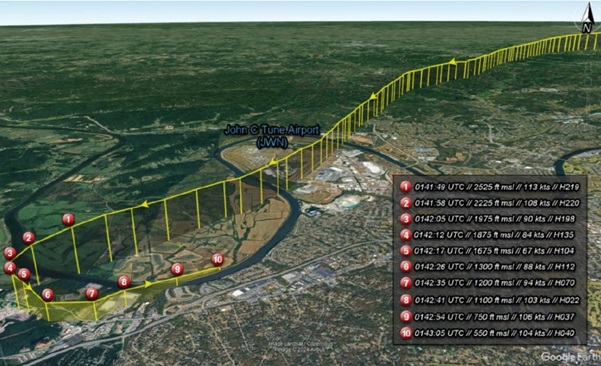Flight planning
Careful preparation doesn't detract from a good time
There are teams that do this in formation, with all of the rigorous coordination that implies, but often the procedures are more relaxed: take off in loose train, with perhaps a change to an agreed-upon air-to-air frequency after leaving the traffic pattern.
One such group assembled on the morning of Sept. 25, 2016, at Hamburg, New York, just southwest of Niagara Falls. On Sunday mornings when weather allowed, they liked to have breakfast at St. Mary’s Municipal Airport in Pennsylvania, some 80 nautical miles to the south-southeast. Depending on the participants’ schedules, anywhere from two to seven airplanes might be involved; this morning, there were six.
The first to depart was a Cessna 120, which took off at 9:18 a.m. Because it was the slowest airplane, its owner, an 830-hour private pilot, liked to leave first. According to another member of the group, the usual practice was for “whichever pilot was ready to take off next” to follow him. On this particular morning, it was an 800-hour instrument-rated private pilot and his wife in their Cherokee 140. They lifted off a few seconds after 9:19 a.m., following the Cessna in the climb to their customary cruising altitude of 3,500 feet msl. Radar-track data ended 50 seconds after the Cherokee leveled off, but two witnesses on the ground saw it converge on the tail of the Cessna until its propeller severed the taildragger’s empennage. “A large debris cloud came off the planes,” according to one witness. “The tail section came nearly straight down. The cockpit traveled eastward and also came down rapidly.” Investigators found the outboard four feet of the Cherokee’s left wing next to the Cessna’s tail, about a third of a mile from the main wreckage, and concluded that as the 120 rolled left, the impact of one of its tires had caused the Piper’s wing to separate. Both cockpits were destroyed.
No one could explain why the Piper’s pilot failed to see the airplane he was following. In hindsight, of course, it’s easier to recognize the intrinsic risk in sending the slowest airplane out first while its faster neighbors closed in from behind … and after the accident the surviving members decided to reverse that procedure and have the fastest airplanes depart first. (They also discussed installing both Automatic Dependent Surveillance-Broadcast In and Out equipment to improve situational awareness.)
A more systematic approach to planning group fly-outs doesn’t seem to foster the relaxed, friendly atmosphere of a casual pleasure outing. Motorcyclists and antique car enthusiasts can get together and go somewhere without a lot of advance discussion. But of course the traffic ahead of them is more predictable and easier to see, and speeds are usually more closely matched. Though the likelihood of a collision on any given flight is very small in any case, minimizing the chance that a pleasant day could turn into an extremely bad one justifies making the preflight preparations feel a little more like work.



